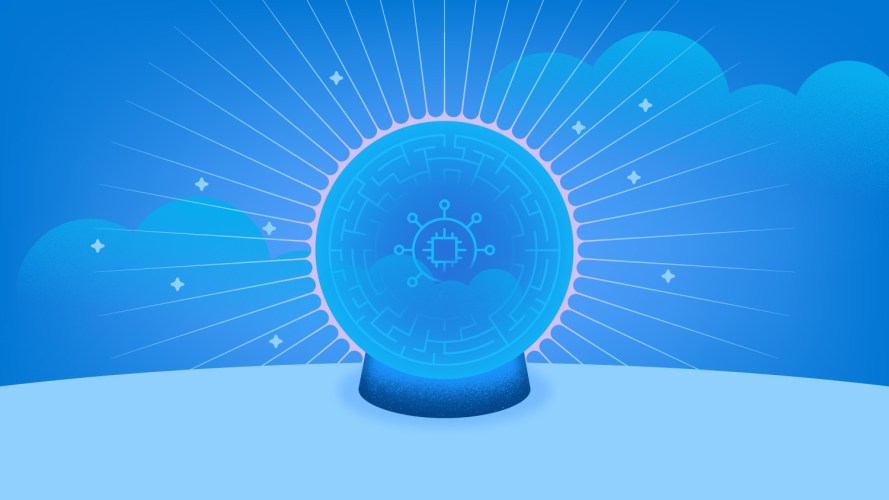Should You Design Custom Actions for Agentforce? If So, Here Are 5 Tips

Consider existing options and whether the task needs a conversational user experience before designing a new Agentforce action.
Your company may be exploring Agentforce – Salesforce’s artificial intelligence (AI) platform – and learning about its capabilities to improve productivity. While Agentforce comes out of the box with actions that make common tasks easy, you can also design custom ones. But there are a few aspects to consider before you design custom actions.
Let’s think through the considerations together:
What are Agentforce Actions?
Do you need to design custom actions?
Collaboration is essential
Five tips for designing custom Agentforce Actions
Keep exploring Agentforce Actions
What are Agentforce Actions?
Agentforce Actions are designed to help people in the flow of their work accomplish tasks and do their jobs more efficiently. In addition to being able to search for specific information about your data, Agentforce will even use knowledge articles to answer questions when applicable.
Agentforce can summarize records and their history. This is useful for people who may be looking at a record with little context, like when a new sales rep is assigned an existing account or opportunity and wants to learn about their previous engagement with their company.

Agentforce can draft emails for you based on generic prompts such as, “Write me an outreach email.” It can also include or exclude specific information, and generate a draft according to a desired length and tone of voice.
There are other actions in development, but it is possible to create custom versions.
Do you need to design custom actions?
Before you invest in designing a custom action, first ask yourself if you should be building a new Agentforce Action at all. Our teams at Salesforce start by asking if the job to be done is best facilitated by a conversational experience at the beginning of the process.
Not all AI experiences use generative AI and not all generative AI experiences need to be in Agentforce.
One example of this is in our Einstein summaries of sessions from Dreamforce. For each session, there was a read-only AI-generated summary. There wasn’t a need for a back-and-forth exchange – or “turn-taking” – so it wouldn’t have made sense to use Agentforce.
Two ways you can learn whether you need a custom action:
- Dig into the Agent Studio to view a list of all of the Agentforce Actions.
- Ask Agentforce to do a task related to your use case. If the action exists, it will respond accordingly – which means you won’t need to design a new one.
Collaboration is essential
Once you’re ready to design custom actions, keep in mind that designing for Agentforce is a collaborative process between UX designers, content designers, product managers, and engineers. You’ll need your collaborators to help you decide:
- What Agentforce will display in the feed as outputs.
- Whether turn-taking steps are required before the action can be completed.
- If you need to create prompt templates to generate something for your action’s output.
Five tips for designing custom Agentforce Actions
To design custom actions, keep the aforementioned considerations in mind. Let’s learn what they mean:
1. Start with how people initiate your action
Think about the range of messages someone might type to trigger this action. They might ask Agentforce to do a task, sharing minimal details like, “write me an email.” Or, they may provide lots of details. Try to broadly cover the different ways that people might initiate the action.
You will also need to think about the name of the action and instructions. If you work with any technical writers or content designers, connect with them to write the instructions or collaborate with you. Agentforce’s services will use the name and instructions to understand how exactly to execute the action.
2. Consider what inputs are needed in order for your action to run
This may be simply the record name you want to summarize, but it could be more in-depth. For example, an action that makes updates to a record requires that the user specifies which record they want to update, the specific field(s), and the field values to change.
We can think of messages in the conversation feed as either user inputs, what you type and send to Agentforce, or the Agent’s responses, or Agentforce outputs.
3. Think about the output
What will Agentforce need to display back to the user once they provide an input? For example:
Input: “Show me my open opportunities.”
Output: Agentforce displays a list of those matching records.
4. Ask whether you need a “turn-taking” step
Typically, an interaction might be quick like the following:
User: Show me X / Summarize X
Agentforce: Thinking…
Agentforce: Here are your results or summary
However, turn-taking is needed if the input were something like “summarize Acme opportunity.” Agentforce would need clarification on which Acme opportunity among many.
Another situation might be when a user asks Agentforce to write an email. The turn-taking step might be a confirmation message before the action can be completed. The output, in this case, is a preview email.
You have the option to ask Agentforce to revise the email by making it shorter, changing the tone, and so on – taking turns. This is because Agentforce keeps the human at the helm, so they can control how the message is written and whether to send it. We never automatically send an email, update, or delete any data without first letting the user review it.

5. Finally, decide whether you need a prompt template
Your action may require a prompt template if it makes calls directly to the large language model (LLM) gateway. What this means is that if the purpose of the action is to generate a summary, notes, descriptions, and such, it will need a prompt template. Having the prompt template saves users time, because they won’t have to provide the same information each time they use this functionality.
An action that returns, say, a list of records without generating new content does not need a prompt template.
Keep exploring Agentforce Actions
Agentforce Actions make it easy for your users to accomplish their tasks. Remember to explore existing actions before you commit to making a new one. But if you do need to design custom actions for your specific purpose, our insights will help guide you.





























